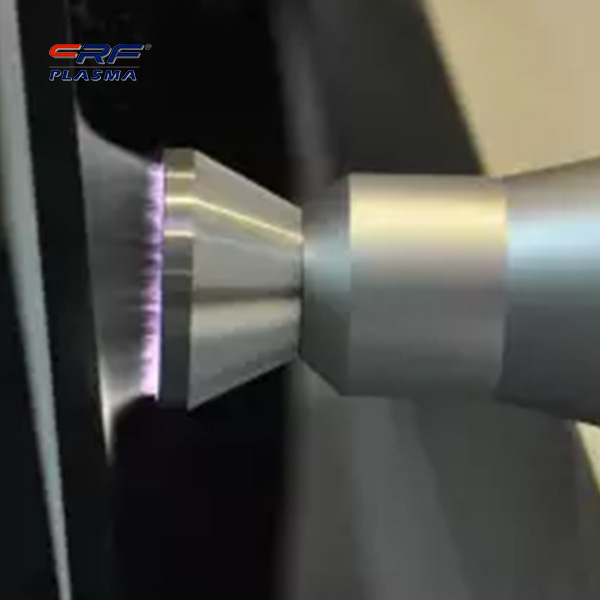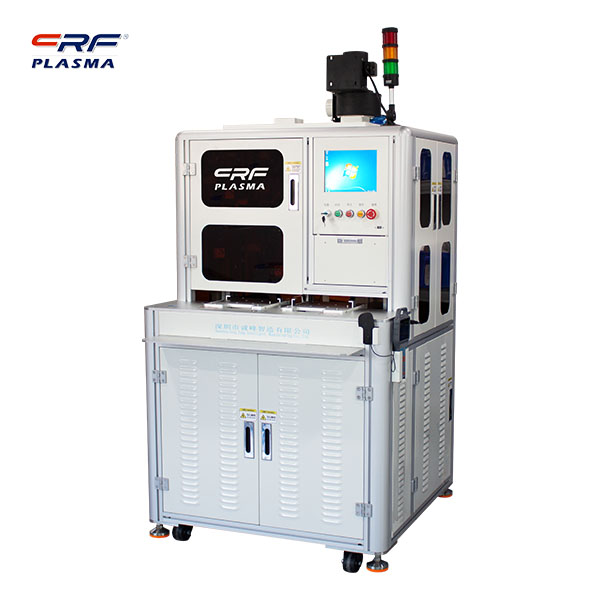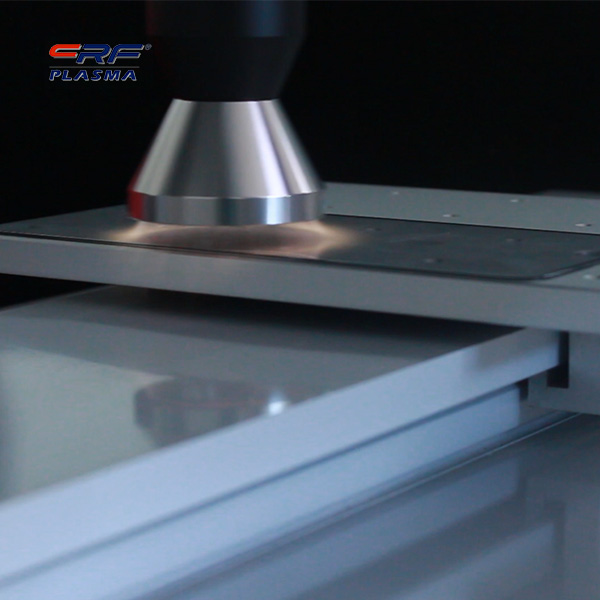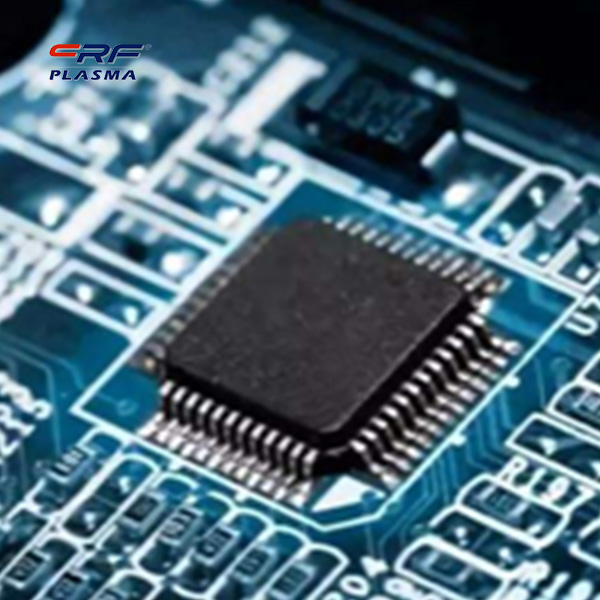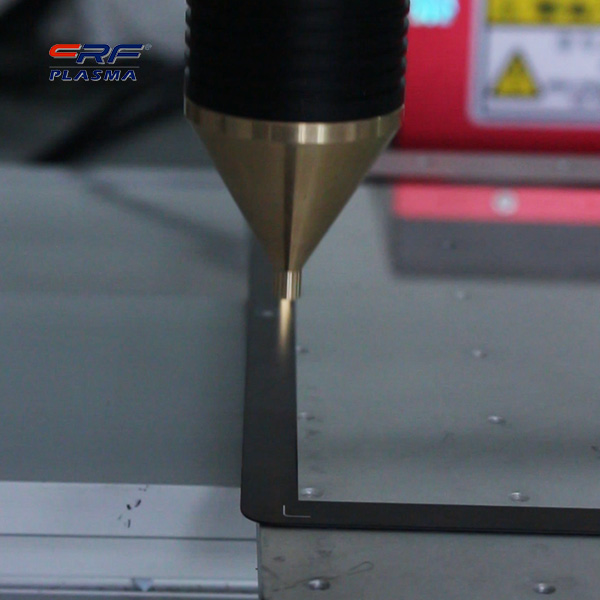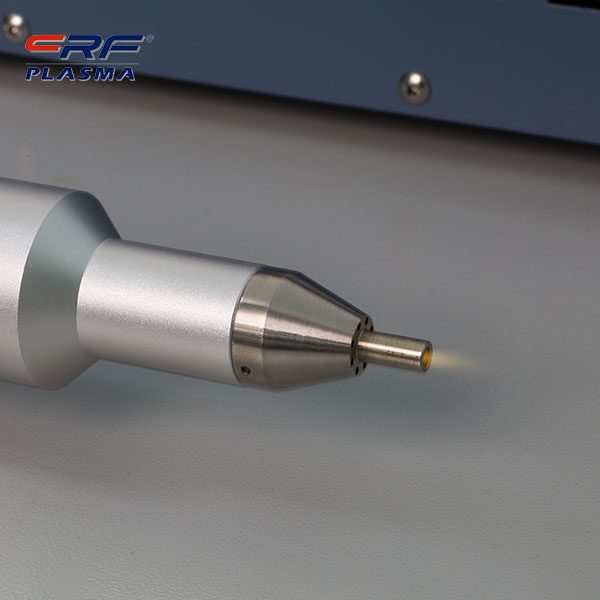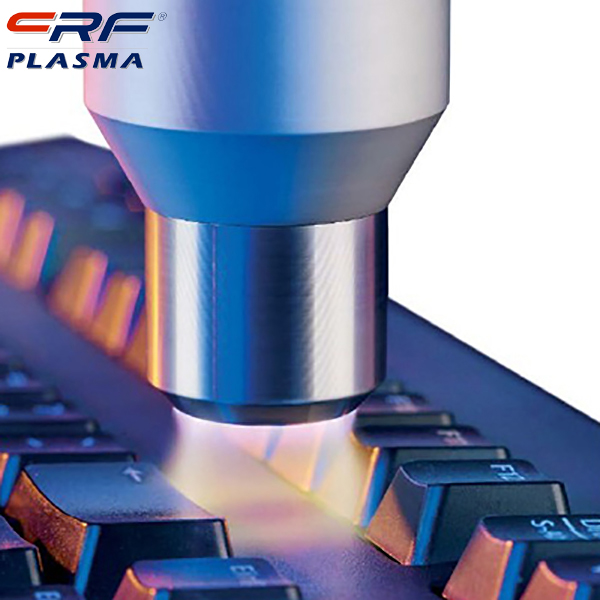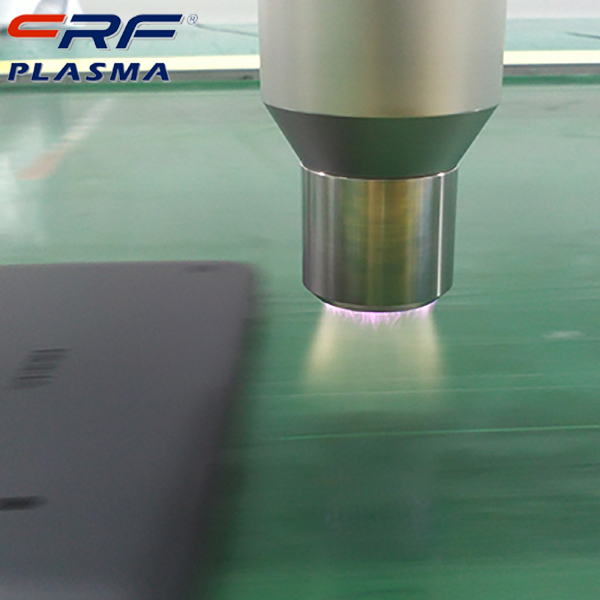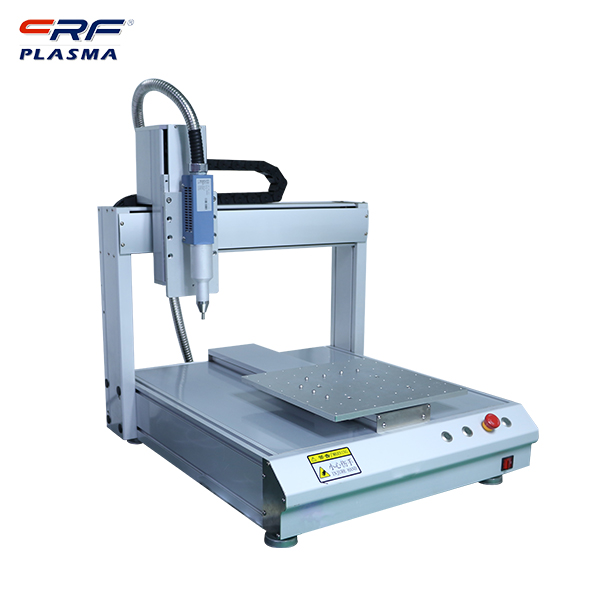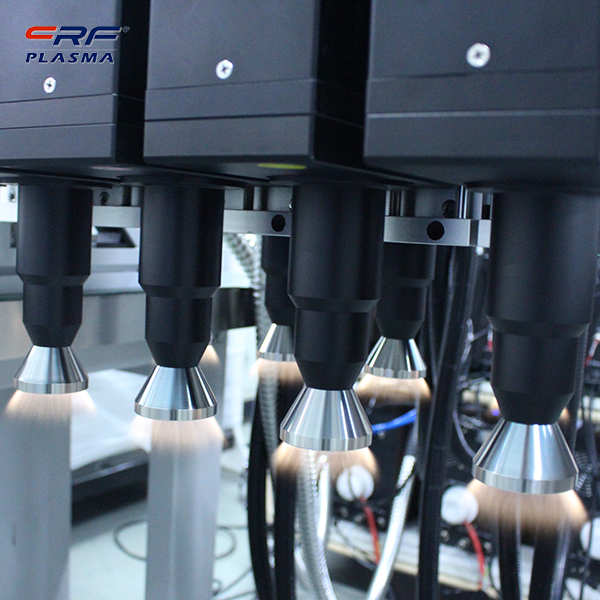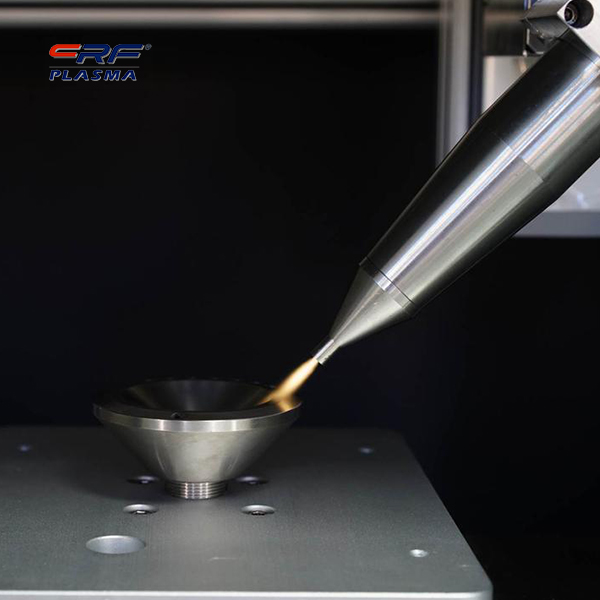
Welcome to Shenzhen Sing Fung Intelligent Manufacturing Co., Ltd.
E-mail:shaobo@sfi-crf.com
Application of plasma technology of low temperature plasma surface treatment machine in textile printing and dyeing
- Categories:Company Dynamics
- Author:Plasma cleaning machine-CRF plasma plasma equipment-plasma surface treatment machine manufacturer-chengfeng intelligent manufacturing
- Origin:
- Time of issue:2021-09-09
- Views:
(Summary description)Application of plasma technology of low temperature plasma surface treatment machine in textile printing and dyeing: The principle of low-temperature plasma surface treatment machine plasma treatment of fabrics is to perform low-pressure glow discharge in a high-frequency oscillating power magnetic field inductive coupling mode, ionization generates low-temperature plasma, and the fabric is sealed in the electric field. A large amount of plasma generated in the electric field and High-energy free electrons can promote corrosion, exchange, grafting and copolymerization of the thin layer on the fiber surface. This process can achieve chemical and physical modification effects that cannot be achieved by chemical reactions without plasma participation. The low-temperature plasma surface treatment mechanism can break the macromolecular chains of the fiber surface layer and present a microscopic rough and uneven state, creating conditions for further modification, or generating ions or free radical groups on the surface to change the performance of the fiber. The mode of action of the low-temperature plasma surface treatment machine on textile materials: gas-discharge→plasma→act on polymer materials 1. Free radicals are generated on the surface of the material 2. Introduce specific groups on the surface of the material 3. A cross-linked structure is formed on the surface of the material 4. The surface of the material is etched 5. Polymer deposits on the surface of the material 6. Grafting the surface of the material The use of low-temperature plasma surface treatment machine low-temperature plasma technology for pretreatment is a dry process of oxidative decomposition, that is, oxygen plasma is used to act on organic molecules such as slurry, grease, wax, etc., to decompose the organic matter into CO2, H2O and run away. Water, energy saving and pollution-free. The use of oxygen low-temperature plasma treatment of cotton grey cloth makes it possible to change the pre-treatment from three steps to one step. After the grey fabric is treated with oxygen low-temperature plasma, the slurry on the surface of the warp yarns, the wax and pectin in the corneal layer on the surface of the cotton fiber are oxidized by the action of the low-temperature oxygen plasma, and oxygen-containing hydrophilic groups and macromolecules are introduced. The chain is cut, thereby increasing the water solubility. After the cotton grey fabric is treated with oxygen low-temperature plasma, it can be directly bleached with hydrogen peroxide without desizing and refining, and its effect is no less than that of cotton fabrics treated by conventional processes. In addition, after oxygen low-temperature plasma treatment, the cotton grey fabric eliminates the need for concentrated alkali and high-temperature desizing and refining processes, so that protein fibers and polyester fibers blended or interwoven with cotton are protected from damage. It shows that the low-temperature plasma treatment of the low-temperature plasma surface treatment machine can greatly promote the pretreatment of ramie fabric. Greatly improve the desizing and capillary effect. The ramie fabric treated with oxygen low-temperature plasma is not only etched on the surface, and the moisture absorption is improved, but also the electronegativity of the fiber surface and the crystallinity of the fiber also change, which will initiate the graft polymerization of acrylamide to improve the dyeing performance of the ramie fabric, thereby increasing The dye uptake rate and deep dyeing property are increased, and at the same time, it is beneficial to improve the level dyeing property and balance the dye uptake rate. Plasma treatment after dyeing has a greater impact on the deep dyeability of ramie fabrics than plasma treatment before dyeing, and plasma treatment after resin or softener finishing will improve the deep dyeability more significantly. Low-temperature plasma surface treatment machine plasma treatment is beneficial to improve the color fastness of direct dye-dyed ramie fabrics, especially the combined treatment of resin finishing and oxygen low-temperature plasma, the dyeing fastness is improved even more, and it can replace the fixing agent Y fixing treatment. Plasma initiates cross-linking, oxidation, degradation and other reactions on the surface of the fiber to change the molecular chain structure of the surface layer. Some groups that bind to the dye can also be generated to form a dye seat, thereby increasing the dye uptake rate. The improvement of fiber dyeing performance by low-temperature plasma is often the combined result of these effects.
Application of plasma technology of low temperature plasma surface treatment machine in textile printing and dyeing
(Summary description)Application of plasma technology of low temperature plasma surface treatment machine in textile printing and dyeing:
The principle of low-temperature plasma surface treatment machine plasma treatment of fabrics is to perform low-pressure glow discharge in a high-frequency oscillating power magnetic field inductive coupling mode, ionization generates low-temperature plasma, and the fabric is sealed in the electric field. A large amount of plasma generated in the electric field and High-energy free electrons can promote corrosion, exchange, grafting and copolymerization of the thin layer on the fiber surface. This process can achieve chemical and physical modification effects that cannot be achieved by chemical reactions without plasma participation.
The low-temperature plasma surface treatment mechanism can break the macromolecular chains of the fiber surface layer and present a microscopic rough and uneven state, creating conditions for further modification, or generating ions or free radical groups on the surface to change the performance of the fiber.
The mode of action of the low-temperature plasma surface treatment machine on textile materials: gas-discharge→plasma→act on polymer materials
1. Free radicals are generated on the surface of the material
2. Introduce specific groups on the surface of the material
3. A cross-linked structure is formed on the surface of the material
4. The surface of the material is etched
5. Polymer deposits on the surface of the material
6. Grafting the surface of the material
The use of low-temperature plasma surface treatment machine low-temperature plasma technology for pretreatment is a dry process of oxidative decomposition, that is, oxygen plasma is used to act on organic molecules such as slurry, grease, wax, etc., to decompose the organic matter into CO2, H2O and run away. Water, energy saving and pollution-free.
The use of oxygen low-temperature plasma treatment of cotton grey cloth makes it possible to change the pre-treatment from three steps to one step. After the grey fabric is treated with oxygen low-temperature plasma, the slurry on the surface of the warp yarns, the wax and pectin in the corneal layer on the surface of the cotton fiber are oxidized by the action of the low-temperature oxygen plasma, and oxygen-containing hydrophilic groups and macromolecules are introduced. The chain is cut, thereby increasing the water solubility.
After the cotton grey fabric is treated with oxygen low-temperature plasma, it can be directly bleached with hydrogen peroxide without desizing and refining, and its effect is no less than that of cotton fabrics treated by conventional processes. In addition, after oxygen low-temperature plasma treatment, the cotton grey fabric eliminates the need for concentrated alkali and high-temperature desizing and refining processes, so that protein fibers and polyester fibers blended or interwoven with cotton are protected from damage.
It shows that the low-temperature plasma treatment of the low-temperature plasma surface treatment machine can greatly promote the pretreatment of ramie fabric. Greatly improve the desizing and capillary effect. The ramie fabric treated with oxygen low-temperature plasma is not only etched on the surface, and the moisture absorption is improved, but also the electronegativity of the fiber surface and the crystallinity of the fiber also change, which will initiate the graft polymerization of acrylamide to improve the dyeing performance of the ramie fabric, thereby increasing The dye uptake rate and deep dyeing property are increased, and at the same time, it is beneficial to improve the level dyeing property and balance the dye uptake rate.
Plasma treatment after dyeing has a greater impact on the deep dyeability of ramie fabrics than plasma treatment before dyeing, and plasma treatment after resin or softener finishing will improve the deep dyeability more significantly. Low-temperature plasma surface treatment machine plasma treatment is beneficial to improve the color fastness of direct dye-dyed ramie fabrics, especially the combined treatment of resin finishing and oxygen low-temperature plasma, the dyeing fastness is improved even more, and it can replace the fixing agent Y fixing treatment.
Plasma initiates cross-linking, oxidation, degradation and other reactions on the surface of the fiber to change the molecular chain structure of the surface layer. Some groups that bind to the dye can also be generated to form a dye seat, thereby increasing the dye uptake rate. The improvement of fiber dyeing performance by low-temperature plasma is often the combined result of these effects.
- Categories:Company Dynamics
- Author:Plasma cleaning machine-CRF plasma plasma equipment-plasma surface treatment machine manufacturer-chengfeng intelligent manufacturing
- Origin:
- Time of issue:2021-09-09 19:32
- Views:
Application of plasma technology of low temperature plasma surface treatment machine in textile printing and dyeing:
The principle of low-temperature plasma surface treatment machine plasma treatment of fabrics is to perform low-pressure glow discharge in a high-frequency oscillating power magnetic field inductive coupling mode, ionization generates low-temperature plasma, and the fabric is sealed in the electric field. A large amount of plasma generated in the electric field and High-energy free electrons can promote corrosion, exchange, grafting and copolymerization of the thin layer on the fiber surface. This process can achieve chemical and physical modification effects that cannot be achieved by chemical reactions without plasma participation.
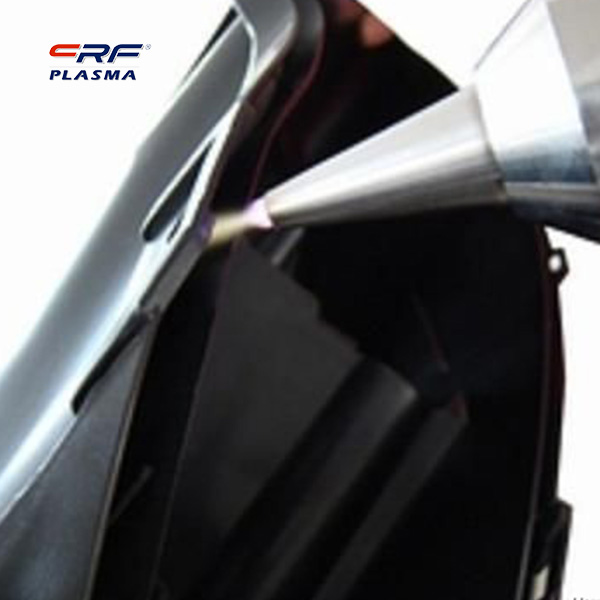 The low-temperature plasma surface treatment mechanism can break the macromolecular chains of the fiber surface layer and present a microscopic rough and uneven state, creating conditions for further modification, or generating ions or free radical groups on the surface to change the performance of the fiber.
The low-temperature plasma surface treatment mechanism can break the macromolecular chains of the fiber surface layer and present a microscopic rough and uneven state, creating conditions for further modification, or generating ions or free radical groups on the surface to change the performance of the fiber.
The mode of action of the low-temperature plasma surface treatment machine on textile materials: gas-discharge→plasma→act on polymer materials
1. Free radicals are generated on the surface of the material
2. Introduce specific groups on the surface of the material
3. A cross-linked structure is formed on the surface of the material
4. The surface of the material is etched
5. Polymer deposits on the surface of the material
6. Grafting the surface of the material
The use of low-temperature plasma surface treatment machine low-temperature plasma technology for pretreatment is a dry process of oxidative decomposition, that is, oxygen plasma is used to act on organic molecules such as slurry, grease, wax, etc., to decompose the organic matter into CO2, H2O and run away. Water, energy saving and pollution-free.
The use of oxygen low-temperature plasma treatment of cotton grey cloth makes it possible to change the pre-treatment from three steps to one step. After the grey fabric is treated with oxygen low-temperature plasma, the slurry on the surface of the warp yarns, the wax and pectin in the corneal layer on the surface of the cotton fiber are oxidized by the action of the low-temperature oxygen plasma, and oxygen-containing hydrophilic groups and macromolecules are introduced. The chain is cut, thereby increasing the water solubility.
After the cotton grey fabric is treated with oxygen low-temperature plasma, it can be directly bleached with hydrogen peroxide without desizing and refining, and its effect is no less than that of cotton fabrics treated by conventional processes. In addition, after oxygen low-temperature plasma treatment, the cotton grey fabric eliminates the need for concentrated alkali and high-temperature desizing and refining processes, so that protein fibers and polyester fibers blended or interwoven with cotton are protected from damage.
It shows that the low-temperature plasma treatment of the low-temperature plasma surface treatment machine can greatly promote the pretreatment of ramie fabric. Greatly improve the desizing and capillary effect. The ramie fabric treated with oxygen low-temperature plasma is not only etched on the surface, and the moisture absorption is improved, but also the electronegativity of the fiber surface and the crystallinity of the fiber also change, which will initiate the graft polymerization of acrylamide to improve the dyeing performance of the ramie fabric, thereby increasing The dye uptake rate and deep dyeing property are increased, and at the same time, it is beneficial to improve the level dyeing property and balance the dye uptake rate.
Plasma treatment after dyeing has a greater impact on the deep dyeability of ramie fabrics than plasma treatment before dyeing, and plasma treatment after resin or softener finishing will improve the deep dyeability more significantly. Low-temperature plasma surface treatment machine plasma treatment is beneficial to improve the color fastness of direct dye-dyed ramie fabrics, especially the combined treatment of resin finishing and oxygen low-temperature plasma, the dyeing fastness is improved even more, and it can replace the fixing agent Y fixing treatment.
Plasma initiates cross-linking, oxidation, degradation and other reactions on the surface of the fiber to change the molecular chain structure of the surface layer. Some groups that bind to the dye can also be generated to form a dye seat, thereby increasing the dye uptake rate. The improvement of fiber dyeing performance by low-temperature plasma is often the combined result of these effects.
Scan the QR code to read on your phone

TEL:0755-3367 3020 / 0755-3367 3019

E-mail:sales-sfi@sfi-crf.com

ADD:Mabao Industrial Zone, Huangpu, Baoan District, Shenzhen




